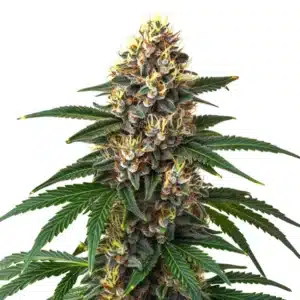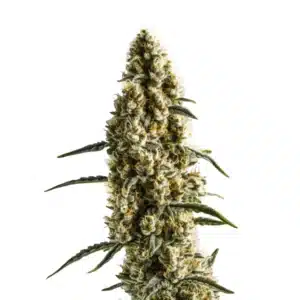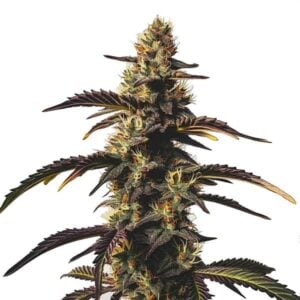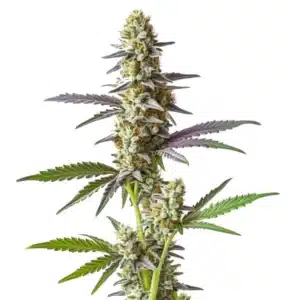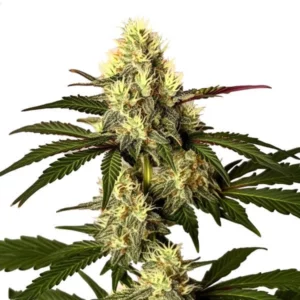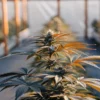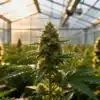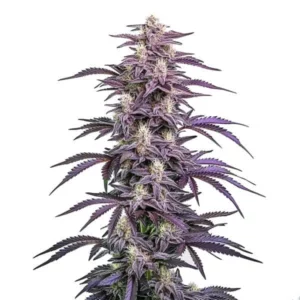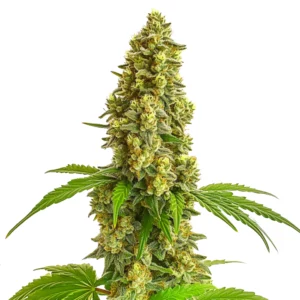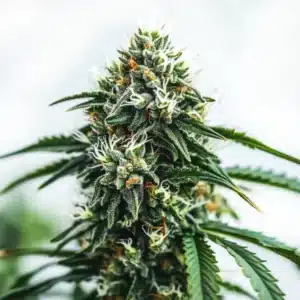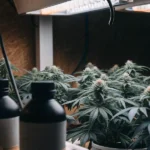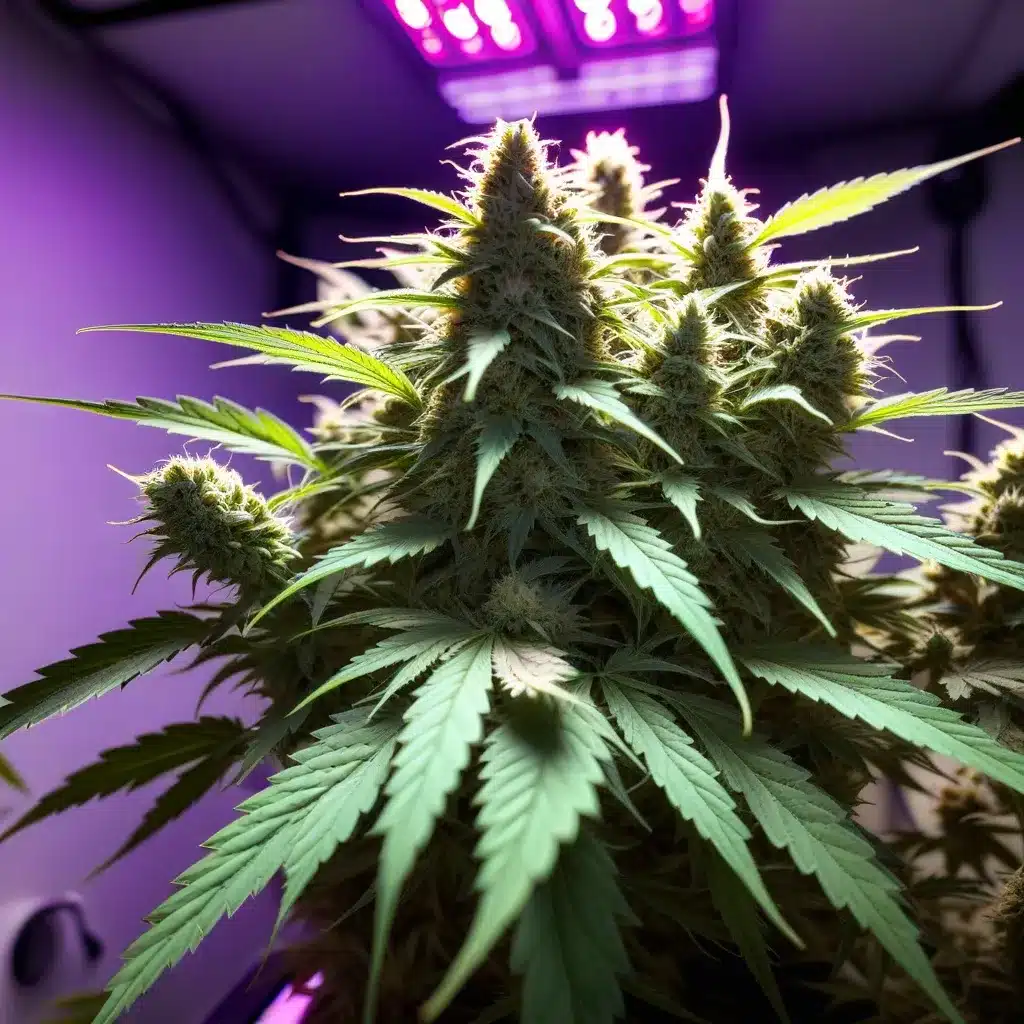
Boosting Cannabis Yields: Tips for Bigger Harvests
How to Achieve Boosted Cannabis Yields
Cannabis Yield Potential
The potential yield of cannabis plants depends on several factors, including genetics, growing conditions, and care. Yield refers to the amount of usable cannabis harvested from a plant, typically measured in grams per square meter for indoor grows or grams per plant for outdoor grows. By understanding the factors that influence yield, growers can take steps to maximize their harvests.
Cannabis yield potential starts with choosing the right strain. Some strains naturally produce higher yields due to their genetics. Pairing the right strain with optimal growing practices ensures the best results. Boosted cannabis yields require a combination of preparation, knowledge, and consistent care.
Recommended Strains
Candy Kush
|
|
THC | 14% - 19% (Medium) |
|
|
Type | Feminized |
|
|
Yield | Medium |
|
|
Phenotype | 60% Indica / 40% Sativa |
Candy Kush Fast Version
|
|
THC | 16% - 18% (Medium) |
|
|
Type | Feminized |
|
|
Yield | High |
|
|
Phenotype | 60% Indica / 40% Sativa |
Key Factors That Affect Cannabis Yields
Several factors directly impact cannabis yields:
- Light Intensity: Cannabis plants need sufficient light for photosynthesis. Higher light intensity leads to more energy for growth and bud production.
- Nutrients: Proper feeding ensures plants have the resources they need to grow and develop robust flowers.
- Environmental Conditions: Temperature, humidity, and airflow all play critical roles in plant health and yield.
- Training Techniques: Methods like topping, low-stress training (LST), and defoliation can significantly increase yields by improving light exposure and airflow.
Mastering these factors is the foundation for achieving boosted cannabis yields.
Importance of Strain Selection for High Yields
Choosing the right cannabis strain is crucial for maximizing yields. Some strains are naturally high-yielding, while others prioritize potency, flavor, or ease of growth. Indica-dominant strains tend to have shorter flowering times and dense buds, while sativa-dominant strains often produce larger plants with higher overall yields.
Research seed banks and reviews to find strains specifically bred for high yields. Autoflowering strains are ideal for beginners, as they require less maintenance, while photoperiod strains offer more control for experienced growers. Matching strain genetics to your growing conditions ensures optimal results.
Promos & Deals
Optimizing Growing Conditions for Higher Yields
Ideal Lighting Setup for Maximum Yield
Lighting is one of the most important factors in cannabis cultivation. Full-spectrum LED lights are ideal for indoor grows, as they provide the necessary wavelengths for all stages of growth. Ensure plants receive 18-24 hours of light during the vegetative stage and 12 hours of light during flowering.
For outdoor grows, choose a location with ample sunlight and minimal shading. Reflective surfaces or supplemental lighting can help boost light exposure in less-than-ideal conditions. Consistent and adequate lighting is key to achieving boosted cannabis yields.
Temperature and Humidity Control for Cannabis Growth
Cannabis plants thrive in specific temperature and humidity ranges:
- Vegetative Stage: 70-85°F (21-29°C) with 40-70% humidity.
- Flowering Stage: 65-80°F (18-27°C) with 40-50% humidity.
Use fans, heaters, or air conditioning to maintain optimal conditions. Proper airflow prevents mold and mildew while helping plants stay healthy. Monitoring environmental conditions regularly ensures plants grow without stress, resulting in higher yields.
Soil vs. Hydroponics: Which Produces Better Yields?
Soil is a traditional growing medium that is easy to use and forgiving for beginners. It provides natural nutrients and supports plant growth with minimal intervention. However, hydroponic systems often produce faster growth and higher yields by delivering nutrients directly to the roots.
Hydroponics requires more technical knowledge but offers precise control over nutrient delivery. Growers seeking boosted cannabis yields often choose hydroponics for its efficiency and scalability. The choice between soil and hydroponics depends on your experience level and growing goals.
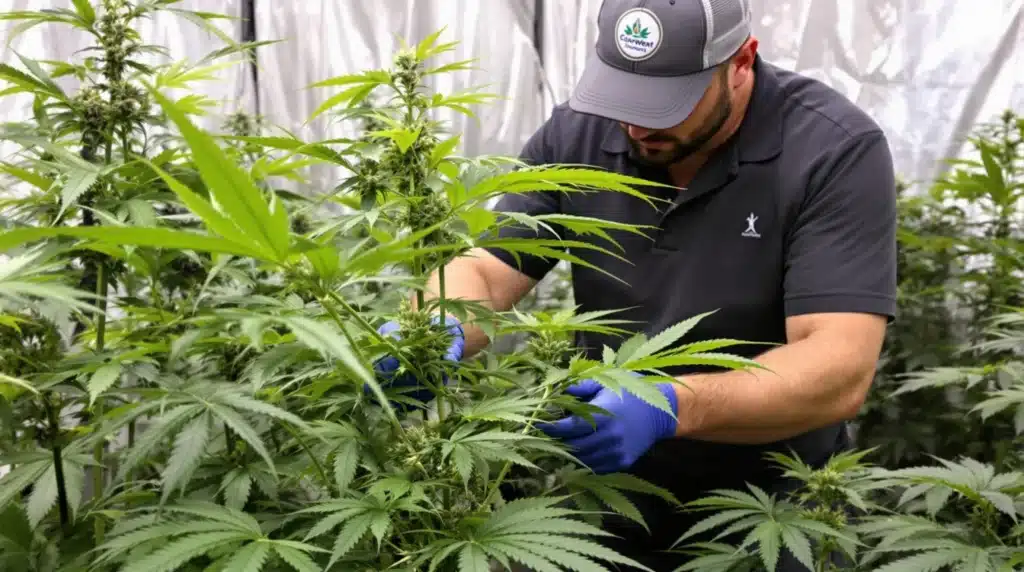
Nutrients and Feeding Strategies
Macronutrients and Micronutrients for Boosted Yields
Cannabis plants require a balanced mix of macronutrients (nitrogen, phosphorus, potassium) and micronutrients (calcium, magnesium, iron). During the vegetative stage, plants need more nitrogen for leafy growth. In the flowering stage, higher levels of phosphorus and potassium promote bud development.
Micronutrients play supporting roles in plant health, ensuring proper photosynthesis and enzyme function. Using high-quality fertilizers and supplements tailored to cannabis ensures plants receive everything they need to thrive.
Feeding Schedule Tips for Bigger Buds
Establish a consistent feeding schedule based on the plant’s growth stage. Feed plants every 2-3 days during the vegetative stage and adjust frequency as needed during flowering. Monitor plants for signs of nutrient deficiencies or overfeeding, such as yellowing leaves or nutrient burn.
Using a nutrient schedule designed for cannabis simplifies the process and ensures plants get the right nutrients at the right time. Regularly checking pH levels (6.0-7.0 for soil, 5.5-6.5 for hydroponics) prevents nutrient lockout and maximizes uptake.
Flushing Before Harvest
Flushing involves watering plants with plain, pH-balanced water 1-2 weeks before harvest. This process is essential for removing any residual nutrients or salt buildup within the growing medium. By flushing, growers ensure that plants use up stored nutrients, resulting in smoother and more flavorful buds. Flushing also prevents harsh, chemical tastes that may otherwise linger in the final product.
This practice improves the overall quality of the cannabis by allowing the plant to focus on producing cannabinoids and terpenes during the final weeks. Growers aiming for boosted cannabis yields find that proper flushing significantly enhances the smoking experience, leaving behind a clean, enjoyable taste and aroma in the buds.
Advanced Techniques for Boosting Yields
Low-Stress Training (LST) for Yield Optimization
LST involves carefully bending and tying branches to create an even canopy, allowing light to penetrate evenly across the plant. By exposing more bud sites to light, this technique maximizes the plant’s growth potential and encourages uniform bud development. LST is particularly beneficial for growers working with limited vertical space, as it keeps plants compact and manageable.
This method is both simple and highly effective, making it popular among new and experienced growers alike. By improving airflow around the canopy and ensuring each bud site gets sufficient light, LST boosts cannabis yields while reducing the risk of mold and other issues.
Pruning and Defoliation Techniques to Improve Bud Growth
Pruning involves removing unnecessary leaves and smaller branches that do not contribute significantly to bud production. This technique redirects the plant’s energy to developing larger, more robust flowers. Pruning also improves airflow, reducing the risk of pests and diseases that thrive in dense foliage.
Defoliation, when done correctly, enhances light exposure to lower bud sites by removing excess fan leaves. This practice allows light to reach areas that might otherwise be shaded, promoting balanced growth throughout the plant. Together, pruning and defoliation can significantly increase yield potential by focusing the plant’s energy on the most productive areas.
Using Trellis Nets for Better Canopy Management
Trellis nets provide structural support for cannabis plants, ensuring that heavy branches do not bend or break under the weight of large buds. By training the branches to grow horizontally across the net, growers create an even canopy that maximizes light distribution and airflow. This setup is especially advantageous for indoor grows where space and lighting efficiency are critical.
In addition to supporting the plant, trellis nets help optimize bud production by encouraging the plant to direct energy toward top bud sites. The result is a healthier, more productive plant with significantly boosted cannabis yields. Trellis systems are a straightforward yet powerful tool for growers looking to maximize their harvest.
Managing Pests and Diseases for Healthy Plants
Preventing Common Pests That Affect Yields
Pests such as spider mites, aphids, and fungus gnats can wreak havoc on cannabis plants, reducing both quality and quantity of the harvest. Preventing infestations starts with maintaining a clean growing environment. Regularly cleaning tools, pots, and grow spaces reduces the risk of pests taking hold. Additionally, using sticky traps and inspecting plants frequently can help catch early signs of infestation.
Healthy plants are naturally more resistant to pests. Providing optimal nutrients, light, and airflow strengthens plants’ defenses. Consistent care and attention to detail are key to ensuring that pests do not compromise your cannabis yields.
Organic Pest Control Solutions
Organic pest control methods are a safe and effective way to protect cannabis plants without introducing harmful chemicals. Neem oil, for example, is a widely used natural deterrent for pests like spider mites and aphids. Applying neem oil to leaves creates a protective barrier that keeps pests at bay. Diatomaceous earth is another excellent option, as it dehydrates soft-bodied insects upon contact.
Companion planting, growing pest-repellent plants like marigolds or basil alongside cannabis, is another organic strategy to deter pests. These natural solutions ensure that the plants remain chemical-free, preserving the purity and safety of the final product while safeguarding yields.
Spotting and Treating Plant Diseases Early
Diseases such as powdery mildew and root rot can quickly spread through a cannabis crop if left unchecked. Early detection is crucial to minimizing damage. Regularly inspecting leaves, stems, and roots for discoloration or unusual growth patterns helps identify problems before they escalate. Yellowing leaves or white powdery spots are common signs of disease that require immediate attention.
To treat plant diseases, start by removing affected areas and adjusting environmental conditions to discourage further spread. Improving airflow, reducing humidity, and sterilizing tools can prevent recurrence. Proactive measures and careful monitoring ensure that plants remain healthy and productive, maximizing cannabis yields.
Harvesting and Post-Harvest Practices
When and How to Harvest for Maximum Potency
Timing the harvest correctly is essential for achieving maximum potency and quality. Monitor trichomes using a magnifying glass or microscope; milky white trichomes with a few amber-colored ones indicate peak potency. Harvesting too early can result in lower cannabinoid levels, while harvesting too late may diminish the plant’s overall effects.
Use sharp, sterilized tools to carefully cut branches, minimizing damage to the plant. Handle buds gently to preserve trichomes, which contain the majority of cannabinoids and terpenes. Proper harvesting techniques ensure that the final product is both potent and flavorful, contributing to boosted cannabis yields.
Drying and Curing Buds to Preserve Yields
Drying is a critical step in preserving cannabis quality. Hang buds upside down in a dark, well-ventilated space with temperatures between 60-70°F (15-21°C) and humidity levels around 50-60%. This environment allows buds to dry slowly, preventing mold while retaining their essential compounds.
Once dried, cure buds in airtight jars to enhance flavor and potency. Open jars daily during the first week to release excess moisture, then less frequently as the curing process continues. Curing not only improves the smoking experience but also extends the shelf life of the product, ensuring top-quality results.
Storing Cannabis to Maintain Quality and Quantity
Proper storage is vital to maintaining the potency and freshness of cannabis. Store dried and cured buds in airtight containers made of glass to prevent exposure to air and moisture. Keep containers in a cool, dark place away from direct sunlight and heat, as these elements can degrade cannabinoids and terpenes over time.
Adding humidity control packs to storage jars helps maintain the ideal moisture level, preventing buds from becoming too dry or too moist. With proper storage techniques, growers can enjoy their cannabis yields for months without sacrificing quality or quantity.
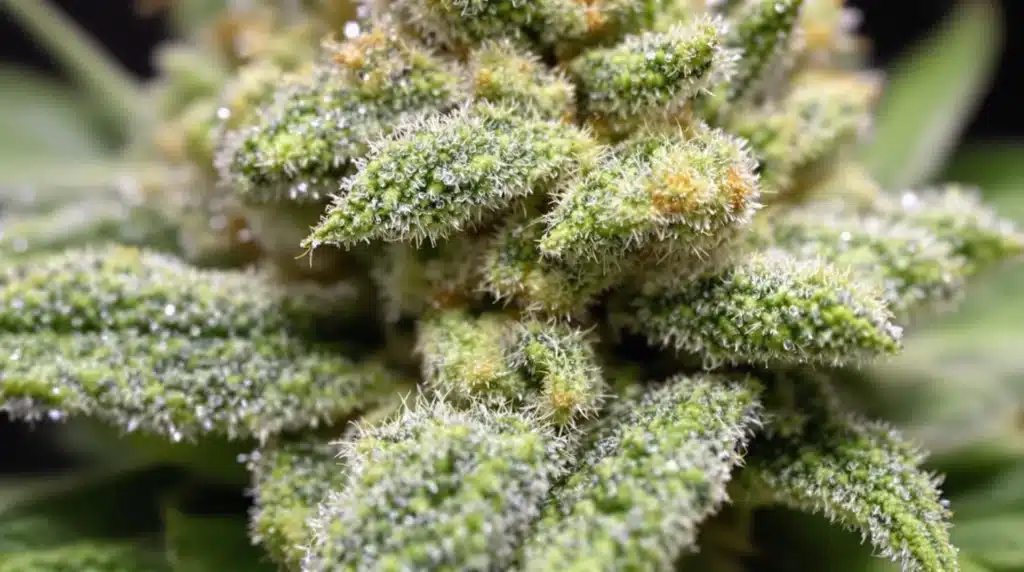
FAQs About Boosted Cannabis Yields
Can all strains produce boosted yields?
While all strains can benefit from optimized growing conditions, some strains are naturally high-yielding. Research strains bred specifically for larger harvests to maximize results.
How much can training techniques improve yields?
Training techniques like LST and topping can increase yields by 20-30% or more by improving light exposure and directing energy to bud sites. These methods are effective for most growing setups.
What’s the most common mistake that reduces yield?
The most common mistake is overfeeding, leading to nutrient burn and stunted growth. Always follow feeding guidelines and monitor plants for signs of stress to avoid yield loss.


